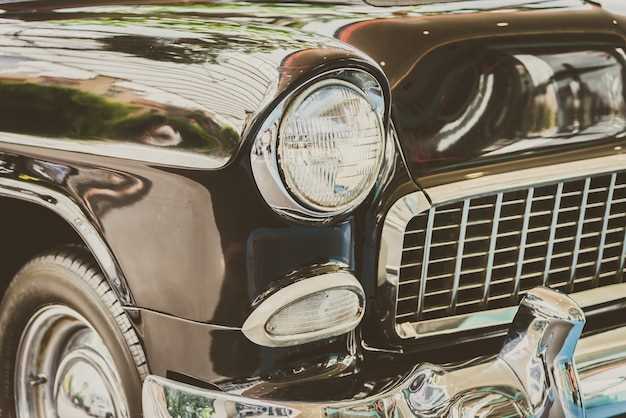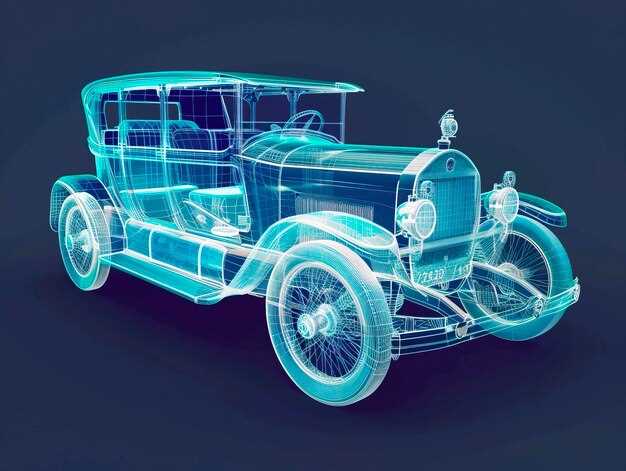Future of Classic Cars in the EV Era

The allure of classic cars lies not only in their distinctive design and engineering but also in the stories they carry from a bygone era. As the automotive industry pivots towards a more sustainable future, the fate of these timeless machines hangs in the balance. The challenge arises from the need to marry the charm of classic cars with the demands of modern technology, particularly in the realm of electric vehicles (EVs).
The electric revolution presents both opportunities and threats to classic car enthusiasts. On one hand, the shift towards electric mobility is essential for reducing carbon emissions and meeting environmental goals. On the other hand, it raises questions about the preservation of vehicle heritage and the identity of classic cars. Can they adapt to this new landscape without losing their essence?
As we explore the future of classic cars in the electric age, we must consider innovative approaches that respect their legacy. Conversions to electric powertrains, for instance, are gaining traction among collectors and restorers, allowing classic cars to remain relevant while benefiting from modern efficiency. This hybrid existence not only breathes new life into cherished vehicles but also ensures they continue to be appreciated by future generations.
Challenges in Preserving Vintage Car Heritage Amidst Electric Transition

The transition to electric vehicles (EVs) presents significant challenges for the preservation of vintage car heritage. One primary concern is the technological shift; classic cars, often celebrated for their mechanical complexity and unique engineering, contrast sharply with the streamlined and digital approach of modern electric cars. This divergence raises questions about how future generations will appreciate the craftsmanship and character of classic vehicles.
Additionally, regulatory pressures are mounting as governments worldwide implement stricter emissions standards and incentivize electric car adoption. These policies can lead to increased restrictions on the use and ownership of classic cars, making it difficult for enthusiasts to maintain and enjoy their vintage models. As a result, the very existence of some classic cars hangs in the balance as they may be classified as non-compliant in regions prioritizing environmental sustainability.
The availability of parts for vintage cars is also jeopardized. Many classic models rely on components that are no longer manufactured or have limited availability, and as the focus shifts towards electric vehicles, the supply chain for these parts may diminish further. Enthusiasts and restorers may face difficulties sourcing authentic materials, which can undermine the integrity of restorations and maintenance efforts.
Furthermore, the cultural perception of cars is evolving. The allure of classic vehicles, rooted in nostalgia and history, may be overshadowed by the appeal of modern technology and the convenience offered by electric alternatives. This shift in consumer priorities risks alienating future enthusiasts from the classic car community.
In conclusion, while the future moves towards electric cars, the preservation of classic car heritage faces numerous obstacles. Balancing innovation with tradition will be crucial to ensure that the stories and significance of these vehicles are not lost in the electric revolution. Reflecting on the past may inspire a more inclusive vision of the future, where both classic and modern cars can coexist and enrich our automotive culture.
Integrating Electric Technology into Classic Car Designs

As the automotive industry embraces electrification, the challenge of integrating electric technology into classic car designs becomes increasingly relevant. Classic cars, with their iconic aesthetics and historical significance, offer a unique canvas for modern electric innovations. This integration not only preserves the charm of vintage automobiles but also enhances their performance and sustainability.
One of the primary methods of integrating electric technology is through retrofitting. This process involves replacing traditional internal combustion engines with electric powertrains. By maintaining the original body and design elements, enthusiasts can retain the classic appeal while benefiting from modern electric technologies. This approach ensures that classic cars can meet contemporary environmental standards without compromising their heritage.
Battery technology plays a crucial role in this integration. Advanced battery systems are now available that can be discreetly installed within the chassis, often in locations originally designed for engines or fuel tanks. This allows for improved weight distribution and retains the original design’s integrity. Moreover, modern batteries offer enhanced range and quicker charging times, making electric classic cars more practical for everyday use.
Integration also comes with opportunities for customization. Electric drive systems allow for varying torque delivery, which can enhance the driving experience. Classic car owners can choose options that cater to their preferences, be it a more responsive acceleration or an eco-friendly cruising experience. This adaptability can attract a new generation of car enthusiasts who value both classic aesthetics and modern performance.
Furthermore, the preservation of classic car cultures benefits from electric technology. Events and car shows can incorporate electric classics, showcasing a diverse range of vehicles that honor both the past and the future. Communities centered around classic cars can expand their narratives by including electrified models, fostering discussions about sustainability and innovation in automotive history.
In conclusion, integrating electric technology into classic car designs presents a promising path forward. This combination not only safeguards the legacy of these vehicles but also elevates their functionality, paving the way for a new era where classic cars can thrive alongside their modern electric counterparts.
The Market for Classic Electric Conversions: Trends and Consumer Demand
The rise of electric vehicles (EVs) has sparked a unique trend in the automotive industry: the conversion of classic cars into electric versions. This trend caters to a growing consumer demand for sustainable transportation while preserving the nostalgia of beloved classic designs. Enthusiasts are increasingly seeking ways to retain the aesthetics and character of vintage cars while integrating modern electric technology.
Market analysis indicates a significant shift in consumer preferences, with many classic car owners willing to invest in electric conversions. This demand is driven by a mix of environmental concerns, rising fuel prices, and the appeal of lower maintenance costs associated with electric vehicles. Furthermore, governments are providing incentives to reduce emissions, enhancing the allure of eco-friendly classic cars.
Conversion companies are emerging, offering comprehensive services to transform classic models into electric vehicles without compromising their integrity. These companies focus on ensuring that the performance of converted cars meets contemporary standards while maintaining the unique driving experience that classic car enthusiasts cherish. This balance between modern efficiency and vintage charm is crucial for sustaining consumer interest.
As the electric revolution progresses, education about the benefits and obligations of ownership will also play a key role in shaping the market for classic electric conversions. Many potential buyers remain uncertain about the technology and its integration into their favorite vehicles. Addressing these concerns will prove vital in fostering a thriving market.
Overall, the future of classic electric conversions appears promising. Increased consumer demand, coupled with technological advancements, suggests that this niche market will continue to expand, bridging the gap between the classic car community and the electric vehicle movement.



